ethyl 3-(2-ethoxycarbonylethylamino)propanoate
Modify Date: 2024-01-07 10:16:27
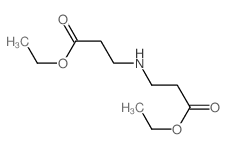
ethyl 3-(2-ethoxycarbonylethylamino)propanoate structure
|
Common Name | ethyl 3-(2-ethoxycarbonylethylamino)propanoate | ||
|---|---|---|---|---|
| CAS Number | 3518-88-5 | Molecular Weight | 217.26200 | |
| Density | 1.037g/cm3 | Boiling Point | 292.4ºC at 760 mmHg | |
| Molecular Formula | C10H19NO4 | Melting Point | N/A | |
| MSDS | N/A | Flash Point | 130.6ºC | |
| Name | ethyl 3-[(3-ethoxy-3-oxopropyl)amino]propanoate |
|---|---|
| Synonym | More Synonyms |
| Density | 1.037g/cm3 |
|---|---|
| Boiling Point | 292.4ºC at 760 mmHg |
| Molecular Formula | C10H19NO4 |
| Molecular Weight | 217.26200 |
| Flash Point | 130.6ºC |
| Exact Mass | 217.13100 |
| PSA | 64.63000 |
| LogP | 0.87330 |
| Index of Refraction | 1.443 |
| Storage condition | 2-8°C |
|
Diethyl 3,3'-Iminodipropionate
SAFETY DATA SHEET Section1. IDENTIFICATION Product name:Diethyl 3,3'-Iminodipropionate Section2. HAZARDS IDENTIFICATION GHS classification
PHYSICAL HAZARDSNot classified
HEALTH HAZARDS Skin corrosion/irritationCategory 2 Category 2A Serious eye damage/eye irritation ENVIRONMENTAL HAZARDSNot classified GHS label elements, including precautionary statements Pictograms or hazard symbols Signal wordWarning Hazard statementsCauses skin irritation Causes serious eye irritation Precautionary statements: Wash hands thoroughly after handling. [Prevention] Wear protective gloves/eye protection/face protection. IF IN EYES: Rinse cautiously with water for several minutes. Remove contact lenses, [Response] if present and easy to do. Continue rinsing. If eye irritation persists: Get medical advice/attention. IF ON SKIN: Gently wash with plenty of soap and water. If skin irritation occurs: Get medical advice/attention. Take off contaminated clothing and wash before reuse. Section3. COMPOSITION/INFORMATION ON INGREDIENTS Substance/mixture:Substance Components:Diethyl 3,3'-Iminodipropionate Percent:>98.0%(GC)(T) CAS Number:3518-88-5 Synonyms:3,3'-Iminodipropionic Acid Diethyl Ester C10H19NO4 Chemical Formula: Section4. FIRST AID MEASURES Inhalation:Remove victim to fresh air and keep at rest in a position comfortable for breathing. Get medical advice/attention if you feel unwell. Diethyl 3,3'-Iminodipropionate Section4. FIRST AID MEASURES Skin contact:Remove/Take off immediately all contaminated clothing. Gently wash with plenty of soap and water. If skin irritation or rash occurs: Get medical advice/attention. Eye contact:Rinse cautiously with water for several minutes. Remove contact lenses, if present and easy to do. Continue rinsing. If eye irritation persists: Get medical advice/attention. Ingestion:Get medical advice/attention if you feel unwell. Rinse mouth. A rescuer should wear personal protective equipment, such as rubber gloves and air- Protection of first-aiders: tight goggles. Section5. FIRE-FIGHTING MEASURES Suitable extinguishingDry chemical, foam, water spray, carbon dioxide. media: Unsuitable extinguishing Solid streams of water media: Specific hazards arising Take care as it may decompose upon combustion or in high temperatures to from the chemical:generate poisonous fume. Precautions for firefighters: Fire-extinguishing work is done from the windward and the suitable fire-extinguishing method according to the surrounding situation is used. Uninvolved persons should evacuate to a safe place. In case of fire in the surroundings: Remove movable containers if safe to do so. Special protectiveWhen extinguishing fire, be sure to wear personal protective equipment. equipment for firefighters: Section6. ACCIDENTAL RELEASE MEASURES Personal precautions,Use personal protective equipment. Keep people away from and upwind of spill/leak. protective equipment and Ensure adequate ventilation. Entry to non-involved personnel should be controlled emergency procedures: around the leakage area by roping off, etc. Environmental precautions: Prevent product from entering drains. Methods and materials for Absorb spilled material in a suitable absorbent (e.g. rag, dry sand, earth, saw-dust). containment and cleaning In case of large amount of spillage, contain a spill by bunding. Adhered or collected up: material should be promptly disposed of, in accordance with appropriate laws and regulations. Section7. HANDLING AND STORAGE Precautions for safe handling Technical measures:Handling is performed in a well ventilated place. Wear suitable protective equipment. Prevent generation of vapour or mist. Wash hands and face thoroughly after handling. Use a ventilation, local exhaust if vapour or aerosol will be generated. Advice on safe handling: Avoid contact with skin, eyes and clothing. Conditions for safe storage, including any incompatibilities Storage conditions:Keep container tightly closed. Store in a refrigerator. Store away from incompatible materials such as oxidizing agents. Heat-sensitive Packaging material:Comply with laws. Section8. EXPOSURE CONTROLS / PERSONAL PROTECTION Engineering controls:Install a closed system or local exhaust as possible so that workers should not be exposed directly. Also install safety shower and eye bath. Personal protective equipment Respiratory protection: Vapor respirator. Follow local and national regulations. Protective gloves. Hand protection: Eye protection:Safety glasses. A face-shield, if the situation requires. Skin and body protection: Protective clothing. Protective boots, if the situation requires. Diethyl 3,3'-Iminodipropionate Section9. PHYSICAL AND CHEMICAL PROPERTIES Physical state (20°C):Liquid Form:Clear Colorless - Almost colorless Colour: Odour:No data available pH: No data available Melting point/freezing point:No data available 139°C/1.6kPa Boiling point/range: Flash point:No data available Flammability or explosive limits: No data available Lower: Upper:No data available 1.04 Relative density: Solubility(ies): No data available [Water] [Other solvents]No data available Section10. STABILITY AND REACTIVITY Chemical stability:Stable under proper conditions. Possibility of hazardous No special reactivity has been reported. reactions: Incompatible materials: Oxidizing agents Hazardous decomposition Carbon monoxide, Carbon dioxide, Nitrogen oxides (NOx) products: Section11. TOXICOLOGICAL INFORMATION Acute Toxicity:No data available Skin corrosion/irritation: No data available Serious eyeNo data available damage/irritation: Germ cell mutagenicity: No data available Carcinogenicity: IARC =No data available No data available NTP = Reproductive toxicity:No data available Section12. ECOLOGICAL INFORMATION Ecotoxicity: Fish:No data available Crustacea:No data available Algae:No data available Persistence / degradability: No data available BioaccumulativeNo data available potential(BCF): Mobility in soil Log Pow:No data available Soil adsorption (Koc):No data available Henry's LawNo data available constant(PaM3/mol): Section13. DISPOSAL CONSIDERATIONS Recycle to process, if possible. Consult your local regional authorities. You may be able to burn in a chemical incinerator equipped with an afterburner and scrubber system. Observe all federal, state and local regulations when disposing of the substance. Diethyl 3,3'-Iminodipropionate Section14. TRANSPORT INFORMATION Hazards Class:Does not correspond to the classification standard of the United Nations UN-No:Not listed Section15. REGULATORY INFORMATION Safe management ordinance of dangerous chemical product (State Council announces on January 26, 2002 and revised on February 16,2011): Safe use and production, the storage of a dangerous chemical, transport, loading and unloading were prescribed. SECTION 16 - ADDITIONAL INFORMATION N/A |
| Precursor 10 | |
|---|---|
| DownStream 10 | |
| 3,3'-iminobis(ethyl propionate) |
| Diethyl 3,3'-Iminodipropionate |
| N,N-bis-(1-ethoxy-carbonyleth-2-yl)amine |
| 2,2'-dicarboethoxydiethylamine |
| diethyl 3,3'-iminodipropanoate |
| diethyl 3,3'-azanediyldipropanoate |
| bis<2-(ethoxycarbonyl)ethyl>amin |
| 3,3'-Iminodipropionic Acid Diethyl Ester |
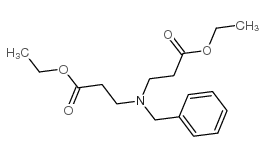 CAS#:6938-07-4
CAS#:6938-07-4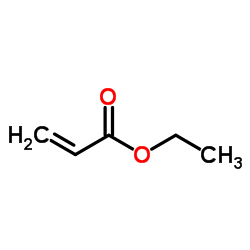 CAS#:140-88-5
CAS#:140-88-5 CAS#:64-17-5
CAS#:64-17-5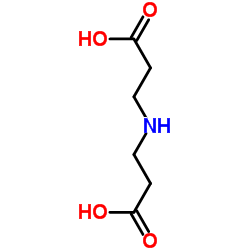 CAS#:505-47-5
CAS#:505-47-5 CAS#:111-94-4
CAS#:111-94-4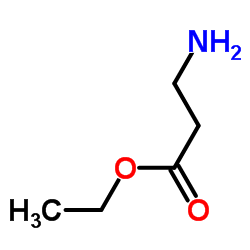 CAS#:924-73-2
CAS#:924-73-2![3-[BENZYL-(2-CYANO-ETHYL)-AMINO]-PROPIONITRILE Structure](https://image.chemsrc.com/caspic/092/782-87-6.png) CAS#:782-87-6
CAS#:782-87-6 CAS#:875231-12-2
CAS#:875231-12-2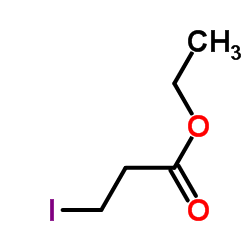 CAS#:6414-69-3
CAS#:6414-69-3 CAS#:141-52-6
CAS#:141-52-6 CAS#:102073-95-0
CAS#:102073-95-0 CAS#:498-96-4
CAS#:498-96-4![[12]anen3 structure](https://image.chemsrc.com/caspic/263/294-80-4.png) CAS#:294-80-4
CAS#:294-80-4![b-Alanine,N-(2-carboxyethyl)-N-[(4-methylphenyl)sulfonyl]- structure](https://image.chemsrc.com/caspic/116/5446-58-2.png) CAS#:5446-58-2
CAS#:5446-58-2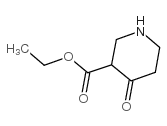 CAS#:67848-59-3
CAS#:67848-59-3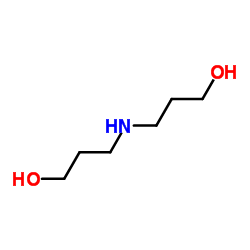 CAS#:14002-33-6
CAS#:14002-33-6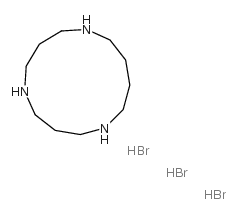 CAS#:35980-62-2
CAS#:35980-62-2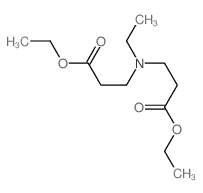 CAS#:3619-64-5
CAS#:3619-64-5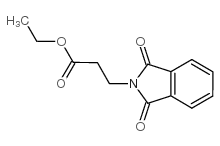 CAS#:4561-06-2
CAS#:4561-06-2 CAS#:5435-00-7
CAS#:5435-00-7